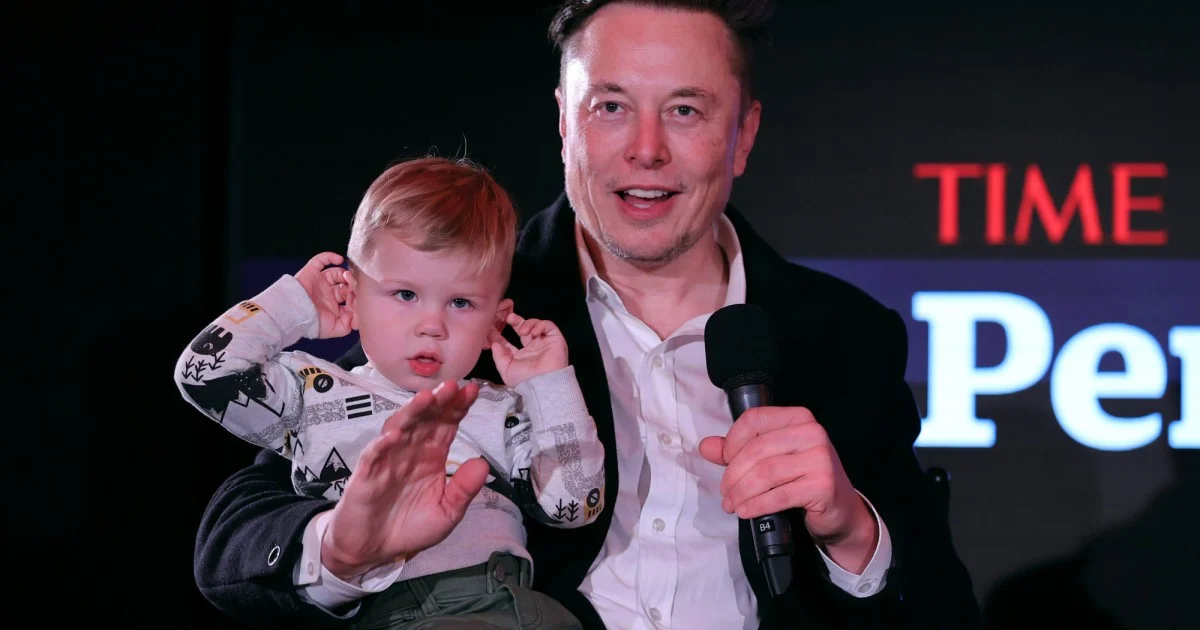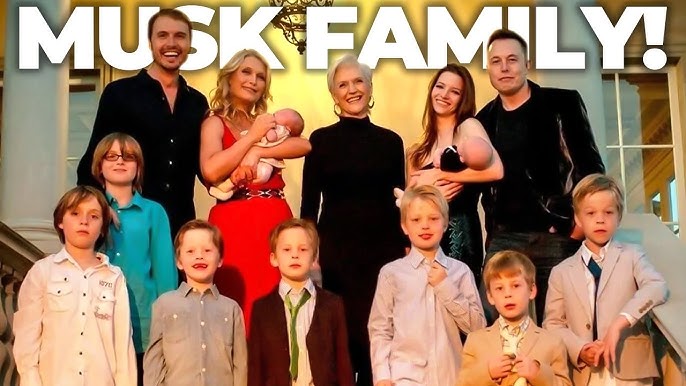The Next Generation of Musk: Elon Musk, the architect of the electric vehicle revolution at Tesla, the pioneer of private space exploration with SpaceX, and the disruptor of social media through his acquisition of X, is a figure perpetually in the global spotlight. His every move, tweet, and business decision is dissected by media, investors, and the public with intense scrutiny. Yet, one of the most curiously personal and consistently discussed aspects of his life revolves around a subject he fiercely, and at times contradictorily, aims to protect: his children. The world knows him as a visionary industrialist, but the role of father to his large and growing brood is a facet that offers a profoundly human, complex, and often misunderstood dimension to the world’s richest person. This fascination isn’t merely celebrity gossip; it is a window into the mind of a man who is actively trying to shape the future, and his children represent the most personal investment in that very future.
The story of Elon Musk’s children is not a simple family tree. It is a narrative intertwined with tragedy and joy, marked by extraordinary privilege and a conscious rejection of conventional norms. It is a tale that spans three different mothers, features names that defy tradition, and is set against a backdrop of immense wealth and global attention. The upbringing of these children raises compelling questions about privacy in the digital age, the weight of a colossal legacy, the practical application of a futurist’s philosophy at home, and the kind of values instilled in those who may one day inherit not just a fortune, but the stewardship of companies aimed at altering the fundamental course of humanity. To understand Elon Musk is to understand his driving motivations, and his children are, by his own admission, his primary motivation for working to secure a better future. Therefore, examining their lives, however much is visible from the outside, becomes crucial to completing the portrait of this enigmatic figure. The Next Generation of Musk.
The Musk Family Tree: A Modern Tapestry
The structure of Elon Musk’s family is a modern tapestry, woven from relationships with three accomplished women and spanning over two decades. It is a family built in chapters, each with its own distinct context and character, reflecting the evolving personal life of its patriarch. Unlike traditional nuclear families, the Musk clan is a blended, expansive network that includes twins and triplets, a child who tragically passed away, and another who has famously transitioned and estranged herself from her father. This complex structure is the first indicator that the typical rules of family life do not apply here, setting the stage for a uniquely unconventional upbringing. The Next Generation of Musk.
The first chapter began with his marriage to Canadian author Justine Wilson in 2000. Their journey into parenthood was marked by profound tragedy when their first son, Nevada Alexander Musk, died of Sudden Infant Death Syndrome (SIDS) at just ten weeks old. This devastating loss profoundly impacted both parents and shaped Musk’s subsequent perspective on risk and the fragility of life. In the years that followed, the couple turned to in vitro fertilization (IVF) to grow their family. Through IVF, Justine gave birth to twins in 2004 and triplets in 2006—five boys in a remarkably short period. This rapid expansion of his family coincided with the most turbulent and ambitious early years of SpaceX and Tesla, creating a dichotomy of a man simultaneously birthing multiple world-changing companies and raising a young family. The five sons from this marriage—Griffin, Xavier, Damian, Saxon, and Kai—form the core of the first generation of Musk children, now young adults navigating their way in the world. The Next Generation of Musk.
The next chapter introduced a new dynamic with the arrival of a daughter. Musk’s relationship with actress and musician Grimes (Claire Boucher) began in 2018, a pairing that captivated the public due to their shared interest in technology, science fiction, and avant-garde culture. Their first child together, a son named X Æ A-12, later simplified to X, was born in 2020. His name became an instant international sensation and a topic of intense debate and confusion, perfectly symbolizing the couple’s rejection of societal norms. In 2021, via surrogate, Grimes gave birth to a daughter named Exa Dark Sideræl Musk, who is affectionately known by the nickname Y. The relationship between Musk and Grimes has been complex and non-traditional, described by themselves as “semi-separated” yet fluid, and they welcomed a third child, a son named Techno Mechanicus (Tau), in 2024, though this was not publicly confirmed until later. This branch of the family tree is the most explicitly futuristic, with names and concepts that seem pulled directly from a cyberpunk novel, signaling a clear intent to raise children who are citizens of a future world. The Next Generation of Musk.
Furthermore, a surprising and previously secret chapter was revealed in 2022. It emerged that Musk had twins with Shivon Zilis, a high-ranking executive at his neural interface company, Neuralink. Born in late 2021, just weeks before his daughter with Grimes, the boy and girl are named Strider and Azure. This revelation added another layer of complexity to the family structure and sparked discussions about Musk’s personal life choices amidst his professional obligations. Zilis, a Yale graduate and expert in artificial intelligence, represents a different kind of partner—one deeply embedded in the operational fabric of Musk’s technological empire. The existence of Strider and Azure underscores the sprawling and, to the outside world, bewilderingly complex nature of Musk’s personal commitments, which now include a total of eleven known children with three different women, a number that he has hinted may still grow.
*[Create a rectangular infographic illustrating the Musk Family Tree. It should be a clean, modern flowchart with photos of Elon, Justine, Grimes, and Shivon Zilis (where appropriate/available). Lines should connect to children’s names and birth years: Nevada Alexander (2002), Griffin (2004), Xavier (2004), Damian (2006), Saxon (2006), Kai (2006), X Æ A-Xii (2020), Exa Dark Sideræl (2021), Techno Mechanicus (2024), Strider (2021), Azure (2021).]* The Next Generation of Musk.
The Philosophy Behind the Names: More Than Just Monikers
To the general public, the names chosen by Elon Musk for his children are perhaps the most immediate and baffling aspect of his parenthood. They are often dismissed as bizarre celebrity eccentricities, the self-indulgent whims of a man too powerful and too wealthy to be questioned. However, to dismiss them so lightly is to miss a deeper and more intentional philosophical statement. For Musk and the mothers of his younger children, particularly Grimes, a name is not merely a label; it is a first gift, a semantic vessel loaded with meaning, ambition, and a forecast of identity. Each name is a dense node of cultural, scientific, and personal references, acting as a mission statement for the child’s place in the world—a world their father is desperately trying to advance.
The naming of X Æ A-12 is the prime example of this philosophy in action. The name, a combination of symbols, letters, and numbers, was a collaborative effort between Musk and Grimes, and each component is a specific homage. The ‘X’ represents the unknown variable, a fundamental concept in mathematics and a symbol of infinite possibility. ‘Æ’ is a ligature from the Latin alphabet for Ash, which Grimes stated stands for Artificial Intelligence in Elvish, a nod to both fantasy and their shared interest in the technological singularity. ‘A-12’ is a dual reference to the Archangel 12, Grimes’s favorite aircraft, and the Lockheed A-12 precursor to the SR-71 Blackbird, an aircraft renowned for its speed, altitude, and technological sophistication. The name was a puzzle box that the entire world tried to solve, and in doing so, it forced a global conversation about the boundaries of language, identity, and the aesthetics of the future. Its subsequent simplification to the more legally palatable “X” did little to diminish its symbolic power; it simply made the unknown variable the entire identity. The Next Generation of Musk.
This pattern of dense, referential naming continues with their daughter, Exa Dark Sideræl Musk. “Exa” is a prefix in the metric system denoting a factor of a quintillion (10¹⁸), a term used in computing and data, pointing to a scale of magnitude that is almost incomprehensible. “Dark” is a reference to dark matter, the mysterious, unseen substance that makes up most of the universe’s mass—a fitting metaphor for the unknown potential within a child. “Sideræl,” pronounced “sidereal,” is a astronomical term relating to the stars, specifically a time scale based on the Earth’s rotation relative to fixed stars rather than the sun. The nickname “Y” continues the mathematical variable theme started by her brother X, and also playfully references the Y chromosome, despite her being female. Together, the name paints a picture of a child conceived amongst the stars, imbued with the power of cosmic forces and the language of advanced science. It is a name that looks outward to the universe, not inward to tradition.
The names chosen with Shivon Zilis, Strider and Azure, while less explosively unconventional, still carry significant tech-centric weight. “Strider” is a name familiar to fantasy enthusiasts from J.R.R. Tolkien’s The Lord of the Rings, where it is the alias of Aragorn, the hidden king, a ranger known for his resilience, leadership, and long journeys. In a modern context, it evokes movement, progress, and perhaps even a software process. “Azure” is the name of Microsoft’s cloud computing service, a fundamental pillar of the modern internet and global AI infrastructure. It also means the bright blue color of a unclouded sky, a serene and positive image. These names, while more accessible, still firmly place the children within a conceptual framework built on technology, exploration, and the infrastructure of the future. They are not named after grandparents; they are named after concepts their parents believe will define the century to come. The Next Generation of Musk.
The Unconventional Upbringing: Privilege, Privacy, and Preparedness
The upbringing of Elon Musk’s children is a subject of immense speculation, existing at the paradoxical intersection of extreme wealth and a stated desire for normalcy, of global fame and a fierce battle for privacy. How does one of the most recognizable men on Earth raise a family? The answer appears to be a unique blend of immense privilege, a conscious insulation from the public eye, and a pedagogical philosophy that seems geared towards creating resilient, problem-solving individuals prepared for a future that may be fraught with both extraordinary opportunity and existential challenge. It is an upbringing devoid of many traditional structures but rich in exposure to cutting-edge ideas and environments.
A central tenet of their childhood, particularly for the older boys, has been a pronounced emphasis on privacy. Unlike many celebrities who share curated glimpses of their family life on social media, Musk has been vehemently opposed to having his children photographed or thrust into the spotlight. This is a principle born from the traumatic loss of his first child and a genuine desire to allow them a childhood free from media scrutiny. They are largely educated privately, with their lives conducted away from the paparazzi’s lens. This creates a strange dichotomy: the world knows their names and their father’s every thought, but their own faces, voices, and personalities remain largely mysterious. This privacy extends to their digital footprints, a luxury in the modern age that their father’s wealth and power can uniquely provide, shielding them from the potential pitfalls of early online fame. The Next Generation of Musk.
However, this does not mean their upbringing is austere or isolated. On the contrary, it is undoubtedly filled with experiences unimaginable to most. It is reasonable to assume that dinner table conversations might involve topics like rocket propulsion, the ethics of artificial intelligence, or multi-planetary colonization. They have likely visited SpaceX launch facilities, witnessed rocket landings, and been in the presence of some of the brightest engineers and scientists of our time. This constant immersion in an environment of extreme ambition and world-altering innovation is a form of education in itself. It normalizes audacious goals and provides a firsthand understanding of the intersection of physics, engineering, and business. For the younger children, being raised by parents like Musk and Grimes means being steeped in a culture that values art, music, and philosophy that is speculative and futurist, potentially fostering incredible creativity and a unique worldview. The Next Generation of Musk.
Furthermore, reports and Musk’s own comments suggest a parenting style that favors reasoning and intellectual engagement over simple rule-giving. He has spoken about explaining the “why” behind things to his children, treating them like small adults in terms of logical discourse. This Socratic method aims to build critical thinking and independence from a young age. There is also an emphasis on preparedness and resilience. Musk’s overarching fear of humanity becoming a single-point failure species, wiped out by a catastrophe on Earth, informs his life’s work. It is logical to assume this perspective trickles down into his parenting, perhaps fostering a mindset of self-reliance and problem-solving. While they enjoy the immense benefits of their father’s wealth—security, travel, access—the philosophical underpinnings of their upbringing seem designed to ensure they are not merely passive heirs but active, engaged, and tough-minded participants in the future he is trying to build. The Next Generation of Musk.
[Create a rectangular image: A stylized, artistic representation of a child’s bedroom. One wall is a classic, starry night sky poster. The opposite wall is a high-resolution digital screen showing a live feed from a SpaceX Starship prototype on a launchpad. Toys are a mix of traditional wooden blocks and a model rocket kit. Captures the blend of normal childhood and extraordinary context.] The Next Generation of Musk.
The Shadow of a Giant: Growing Up in the Legacy of Elon Musk
To be the child of any highly successful parent is to face the challenge of emerging from their shadow. To be a child of Elon Musk is to be born in the shadow of a veritable titan, a man whose name is synonymous with revolutionizing multiple industries and whose public persona is a blend of genius, meme-lord, and controversial figure. The weight of this legacy is an inescapable factor in the lives of all his children, presenting a unique set of psychological and emotional challenges that will shape their identities, choices, and paths in life forever. It is a inheritance not just of wealth, but of overwhelming expectation and global scrutiny.
The most profound aspect of this legacy is the sheer scale of their father’s ambitions. His stated goals are not to grow a successful business but to transition the world to sustainable energy, make humanity a multi-planetary species to ensure its survival, and merge human consciousness with AI to avoid obsolescence. These are messianic, species-level goals. For his children, this creates a familial environment where the stakes are always astronomically high. A bad grade or a failed sports match is not just a personal setback; it exists in a context where their father is trying to save humanity. This could be a tremendous source of pressure, a feeling that their own lives and achievements must be equally grand and meaningful to justify their place in this narrative. Alternatively, it could provide a liberating perspective, making typical adolescent concerns seem trivial by comparison and freeing them to pursue truly unconventional paths without fear of societal judgment. The Next Generation of Musk.
The public and often polarizing nature of Musk’s persona adds another layer of complexity. Their father is not a privately respected businessman; he is a constant subject of news headlines, social media frenzy, and intense public debate. He is adored by many as a real-life Tony Stark and vilified by others as a reckless billionaire. This means his children are exposed to a constant, unfiltered stream of praise and criticism aimed at their parent. They must navigate their own feelings about their father while simultaneously confronting the world’s often harsh and reductionist opinions of him. This can create a defensive family loyalty or, as seen in one case, lead to estrangement based on a rejection of that public persona and its associated values. Developing an independent sense of self outside of this colossal public identity is a monumental task of introspection and resilience. The Next Generation of Musk.
Moreover, the legacy is intensely practical. Barring any drastic changes, each child is poised to inherit a portion of one of the largest fortunes in human history, tied to ownership in world-leading companies. This level of wealth is a tool of almost limitless power, but it is also a gilded cage. It can remove the necessity of work, the drive ambition that often comes from need, and the grounding experience of building something from nothing. The challenge for them will be to find their own purpose—to use their resources as a launchpad for their own passions and contributions rather than allowing it to become a defining, and potentially stifling, endpoint. Will they feel compelled to join the family businesses and continue their father’s work? Will they strike out in entirely new directions in arts, sciences, or philanthropy? Or will they choose a life of quiet anonymity, rejecting the spotlight that has forever followed their name? These are the questions that will define the second generation of Musk. The Next Generation of Musk.
A Public and Private Struggle: The Case of Vivian Jenna Wilson
The narrative of Elon Musk’s children, while largely one of protected privacy, includes a very public and poignant chapter that underscores the profound complexities of their situation: the story of his transgender daughter, Vivian Jenna Wilson. Previously known as Xavier Musk, one of the twins born to Justine Musk, she petitioned a California court in April 2022, on her 18th birthday, to legally change her name and gender, and—most significantly—to sever her legal ties to her father, taking her mother’s maiden name, Wilson. This act was not just a coming-of-age or coming-out story; it was a powerful and public declaration of identity and a rejection of the Musk patriarchate, offering a rare glimpse into the potential fractures within this famously private family. The Next Generation of Musk.

Vivian’s court filing was a simple, standard document, but its implications were seismic. By choosing to change her name and gender marker, she was asserting control over her own identity in the most fundamental way possible. The name “Vivian Jenna Wilson” is entirely her own, free from the unusual, futurist, or tech-bro connotations of the names given to her younger siblings. It is a beautiful, classic name, and its selection feels like a conscious embrace of a more traditional and personal identity, one defined by her own truth rather than her father’s worldview. The choice of “Wilson” explicitly signals a alignment with her mother, Justine, and a distancing from the Musk dynasty and everything it represents in the public consciousness. The Next Generation of Musk.
The reasons behind her decision to disassociate from her father, while not explicitly detailed in the legal documents, can be inferred from the timing and context. Her petition was filed at a time when Elon Musk was becoming increasingly vocal and politically active on social media, often wading into culture war issues and expressing views that are widely perceived as hostile to the LGBTQ+ community, and particularly to transgender individuals. He has repeatedly mocked pronouns and spread rhetoric that aligns with trans-skeptical perspectives. For a young transgender woman coming into her own identity, having a father who is a leading voice for a movement that often denies the validity of her very existence would understandably create an unbearable conflict. Her action can be seen as a necessary act of self-preservation, a way to define herself in opposition to the very public and hurtful stance of her biological father. It is a tragic irony that the man who names his children after unknown variables and dark matter could not accept the variable of his own child’s gender identity.
This event serves as a crucial reminder that behind the headlines about unique names and futuristic philosophies are real, complex human beings with their own struggles, emotions, and needs. No amount of wealth or privilege can immunize a family from the challenges of acceptance and understanding. Vivian’s story highlights a potential clash between a futurist ideology that looks to the stars and the immediate, human need for emotional validation and support in the present. It proves that the greatest challenge in raising the next generation may not be preparing them for life on Mars, but for the simple, earthly need to be loved and accepted for who they are. The Next Generation of Musk.
The Mothers: Justine, Grimes, and Shivon Zilis
Any discussion of Elon Musk’s children is incomplete without acknowledging the central and formative role of their mothers. While Musk provides the surname, the vast fortune, and the global platform, the day-to-day shaping of these children’s values, emotional worlds, and perspectives falls heavily on three highly intelligent, strong-willed, and very different women: Justine Musk, Grimes, and Shivon Zilis. Each woman represents a different chapter in Musk’s life and brings a distinct philosophical and maternal approach to raising their shared children, creating a multifaceted family structure that defies easy categorization. The Next Generation of Musk.
Justine Musk is the foundation. A successful author of fiction and non-fiction herself, she was married to Musk during the tumultuous early years of his rise, weathering the storm of his intense work ethic and the unimaginable grief of losing their first child. She has been the primary constant in the lives of the five older boys, raising them largely out of the spotlight in Los Angeles. From her writings and interviews, a picture emerges of a deeply thoughtful, literary, and psychologically aware parent. She has spoken about the challenges of co-parenting with a figure like Musk and her efforts to provide a sense of normalcy and groundedness for her sons. Her worldview, expressed through her novels and her advocacy, is one that explores themes of power, ambition, and identity—themes her children are living firsthand. She represents the anchor, the connection to a more traditional form of emotional and intellectual nourishment rooted in the arts and humanities, providing a crucial counterbalance to their father’s techno-optimism. The Next Generation of Musk.
Grimes (Claire Boucher) is the iconoclast. An acclaimed musician and artist known for her ethereal, cyberpunk aesthetic and deeply philosophical engagement with technology and futurism, her influence on Musk’s younger children is inherently avant-garde. Her relationship with Musk was described as a meeting of minds, two people who “just knew” each other on a conceptual level. As a mother to X, Y, and Tau, her approach is certain to be wildly creative and unconventional. She has spoken about her son X being a “little A.I.” and her desire for her children to be free to explore the furthest boundaries of art and science. Her maternal philosophy is likely less about rules and routines and more about fostering limitless creativity, curiosity, and a critical stance towards mainstream culture. She is the mother as fellow traveler into the unknown, preparing her children for a world that doesn’t yet exist by encouraging them to invent it themselves. The Next Generation of Musk.
Shivon Zilis is the insider. A Harvard-educated venture capitalist and currently a director of operations and special projects at Neuralink, she exists firmly within Musk’s professional orbit. She is not a artist or a writer but a skilled operator in the high-stakes world of technology and AI. Her relationship with Musk, which produced twins Strider and Azure, was kept entirely secret from the public for months, reflecting a desire for privacy and a focus on practicality over publicity. As a mother, her influence is likely to be one of sharp intellect, strategic thinking, and a deep immersion in the core technologies that define their father’s work. She represents a different model: the mother as a partner in the mission, someone who understands the intricacies of the companies her children may one day be involved with. Her approach would be one of cultivating competence, analytical rigor, and an insider’s understanding of the engines driving their father’s vision for the future. The Next Generation of Musk.
Education and Future Paths: The Musk School of Life
The education of Elon Musk’s children is a topic of intense curiosity. What curriculum does a man who has repeatedly criticized traditional education systems and even started his own experimental school, Ad Astra (later Astra Nova), choose for his own progeny? The answer appears to be a hybrid model that blends selective elements of conventional schooling with intense, self-directed, problem-based learning inspired by his own philosophy. The goal seems less about earning top grades and more about cultivating a specific type of mind: one that is innovative, resilient, and capable of solving the “grand challenges” facing humanity. The Next Generation of Musk.
For the older boys, their education involved a period at the exclusive and private Harvard-Westlake School in Los Angeles. However, Musk’s dissatisfaction with standard pedagogy led him to create Ad Astra (Latin for “to the stars”) in 2014, initially operating out of the SpaceX headquarters in Hawthorne, California. This school was the physical manifestation of his educational beliefs. It reportedly eliminated grade levels, focusing instead on individual aptitude and interest. The curriculum was heavily weighted towards problem-solving, artificial intelligence, ethics, and applied sciences. Students were encouraged to work on real-world projects, from designing business models to debating the ethics of simulated worlds. This environment, surrounded by rocket scientists and engineers, was an educational experience unlike any other, designed to produce not students, but proto-innovators.
For the younger set of children, the educational path is less clear but will undoubtedly be influenced by this same ethos. While they may attend private schools for structure and socialization, it is certain that their learning will be heavily supplemented by the unique environment they inhabit. A trip to a rocket factory becomes a physics lesson; a conversation about neural interfaces becomes a biology seminar; a discussion about the energy grid becomes an economics tutorial. This “unschooling” or experiential learning model, supercharged by unlimited access to experts and technology, is arguably the ultimate form of education for the world they are being prepared to lead. The focus is on first principles thinking—breaking problems down to their fundamental truths and reasoning up from there, a method Musk credits for his own success. The Next Generation of Musk.
As for their future paths, the world is quite literally their oyster. The older sons are now of college age, and it will be fascinating to see if they pursue higher education at elite institutions, dive directly into the family businesses, or forge entirely independent careers in fields unrelated to technology. The younger children are being raised in an even more intensely futurist environment. Will they become the first true “Martians,” involved in governing or developing a colony on Mars? Will they lead Neuralink, working on the human-computer interface? Or will they, like their half-sister Vivian, reject this pre-ordained path entirely and choose something quiet, personal, and away from the glare of their father’s universe? The resources at their disposal mean they have the freedom to do anything. The challenge, instilled in them by both their father and their mothers, will be to do something meaningful. The Next Generation of Musk.
*[Create a rectangular infographic: A timeline titled “The Musk Educational Philosophy.” It starts with “Traditional Schooling (Harvard-Westlake)” with a red “X” through it. Then shows “Ad Astra (2014-2020)” with bullet points: No grades, Problem-based learning, AI & Ethics focus, Located at SpaceX. Then leads to “Astra Nova (Online School)” and finally branches into “Experiential Learning” with icons for a rocket, a brain implant, and a solar panel, representing learning through immersion in Musk’s companies.]*
The Public Fascination: Why We Care About the Musk Children
The intense public fascination with Elon Musk’s children transcends typical celebrity gossip. While there is an element of curiosity about the lives of the rich and famous, the interest in this particular family unit is deeper, more symbolic, and touches on broader societal anxieties and questions about our collective future. We are not just watching a family; we are watching a living experiment in futurist parenting, a case study in the intersection of extreme wealth, technology, and human values playing out in real-time. They are proxies for a conversation about the world we are creating. The Next Generation of Musk.
Firstly, they represent a compelling “what if” scenario. Elon Musk is a man actively trying to force the future into existence. His children are the first humans to be raised from birth entirely within that constructed reality. They are the control group of one. The public watches them, however fragmentarily, for clues. Will they become the super-competent, multi-planetary pioneers their father’s philosophy is designed to produce? Or will they reveal the unforeseen flaws and human costs of such an ambitious, technocratic upbringing? Their lives are a test of the hypothesis that a focus on first principles, exposure to grand challenges, and insulation from traditional societal pressures can produce a new kind of human. We care because their success or failure feels oddly predictive. The Next Generation of Musk.
Secondly, the family serves as a Rorschach test for our own values. People’s reactions to the unusual names, the non-traditional family structure, and the overall philosophy are deeply revealing. Those who admire Musk see the children as exciting pioneers with incredible opportunities. Those who are critical of him see them as victims of a paternal ego, given bizarre names and raised as props in a larger-than-life narrative. The story of Vivian Jenna Wilson powerfully splits opinion along ideological lines. This fascination is therefore not just about them, but about us. We project our hopes for the future, our fears about technology, our views on parenting, and our debates about gender and identity onto this single, hyper-visible family. They become a canvas for our own cultural battles. The Next Generation of Musk.

Finally, there is a simple, human desire for narrative. Elon Musk’s story is a modern-day epic—a tale of an immigrant who overcame adversity, endured failure, and is now aiming for the stars. Every epic needs a next generation, heirs to the throne. The public is inherently interested in the sequels, in the question of legacy. Will the children continue the saga, expanding the empire to Mars and beyond? Or will the story end with them, the fortune dissipated, the companies sold, and the ambition fading into history? The children are the key characters in the unfinished next volume of this story, and the world is waiting to see how the plot develops.
The Next Generation of Musk
FAQs
Q1: How many children does Elon Musk have?
A: As of mid-2024, Elon Musk has eleven living children. This includes five sons (Griffin, Xavier, Damian, Saxon, and Kai) with his first wife, Justine Wilson; a son (X Æ A-Xii, “X”), a daughter (Exa Dark Sideræl, “Y”), and another son (Techno Mechanicus, “Tau”) with musician Grimes; and twins, a boy and a girl (Strider and Azure), with Neuralink executive Shivon Zilis. His first child, Nevada Alexander Musk, passed away from SIDS in 2002.
Q2: What is the story behind the name X Æ A-12?
A: The name is deeply symbolic. The “X” represents the unknown variable. “Æ” is a character that Grimes stated stands for Artificial Intelligence (AI) in Elvish. “A-12” refers to the Archangel 12, her favorite aircraft, and the Lockheed A-12 reconnaissance aircraft, the precursor to the SR-71 Blackbird. The name was later officially changed to “X” to comply with California naming laws that require names to use only the 26 letters of the English alphabet.
Q3: Why did his daughter, Vivian Jenna Wilson, change her name and disassociate from him?
A: Vivian Jenna Wilson, formerly known as Xavier Musk, is transgender. On her 18th birthday, she petitioned a court to legally change her name and gender marker, and to remove “Musk” as her surname, replacing it with her mother’s maiden name, “Wilson.” While she did not publicly state her reasons, the timing coincided with Elon Musk making numerous public statements on social media that were perceived as critical of and hostile to transgender identity, suggesting her decision was an act of self-affirmation and a rejection of his public stance.
Q4: How does Elon Musk’s futurism influence how he raises his children?
A: Musk’s philosophy profoundly influences their upbringing. He has criticized traditional education, leading him to start his own experimental school, Ad Astra, which focused on problem-solving, AI, and ethics instead of standard grades. His children are immersed in an environment of innovation, with likely exposure to SpaceX, Tesla, and Neuralink from a young age. The unconventional names he chooses are also a direct reflection of his futurist ideals, embedding scientific and cosmic concepts into their identities from birth.
Q5: Who are the mothers of Elon Musk’s children?
A: The mothers are:
Justine Musk (née Wilson): Musk’s first wife, a author. Mother to his older six children, including Nevada Alexander (deceased) and the twins and triplets.
Grimes (Claire Boucher): A musician and artist. Mother to X, Y, and Tau.
Shivon Zilis: A project director at Neuralink. Mother to the twins Strider and Azure.
Conclusion:
In the end, beyond the headlines, the billions, the rockets, and the philosophical debates, the story of Elon Musk’s children is, at its core, a human one. It is a story about the universal challenges of parenting: the desire to protect, the ambition to provide opportunities we never had, the struggle to impart values, and the ultimate recognition that our children are their own people, with their own dreams and destinies that may diverge wildly from our own plans for them. The scale is magnified to an almost surreal degree, but the fundamental emotions and conflicts are recognizable to any parent.




